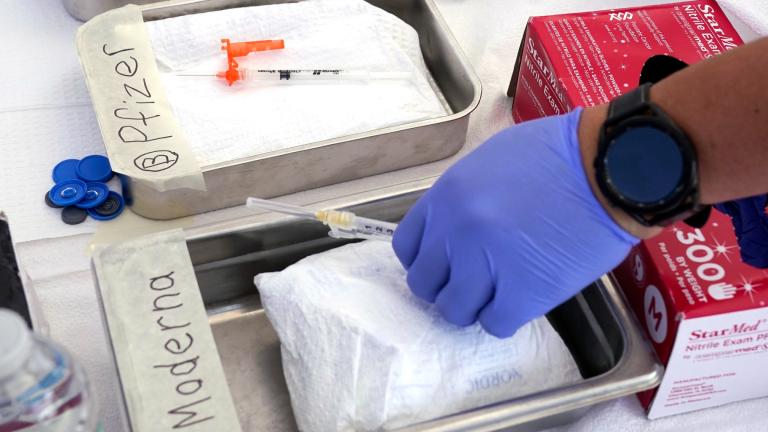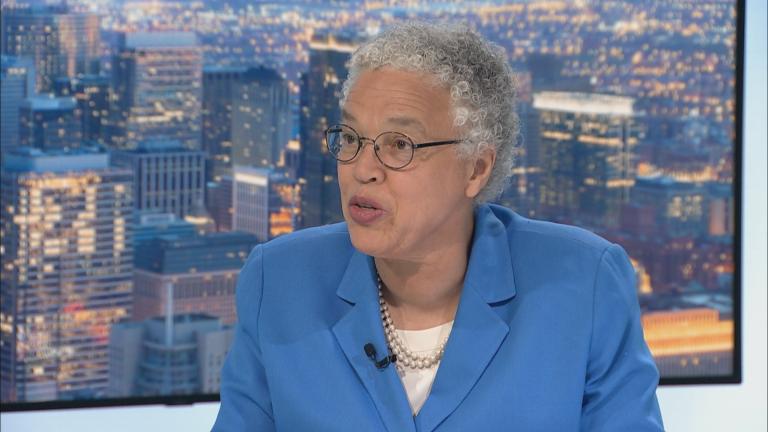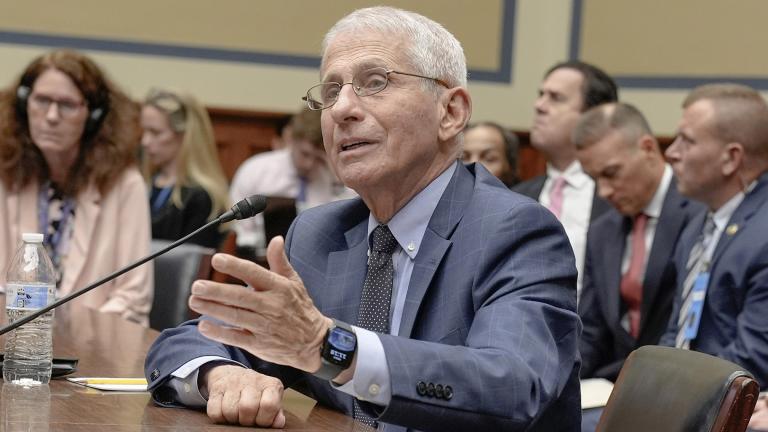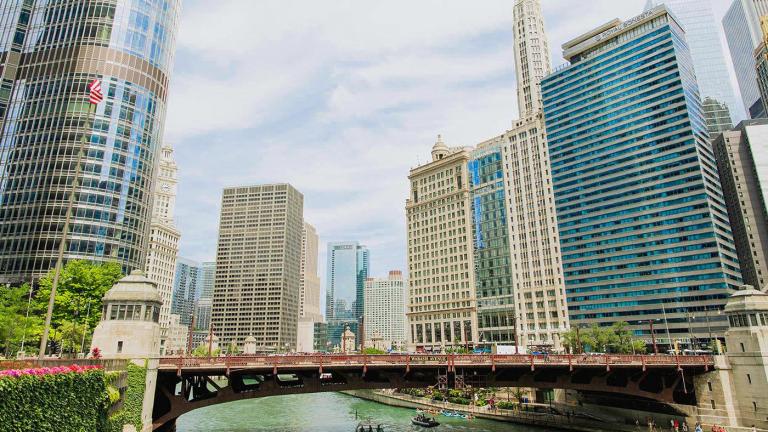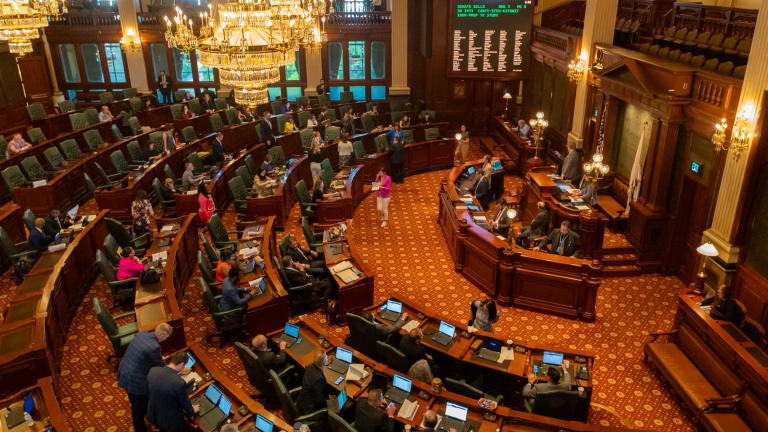Chicago’s Austin neighborhood on the city’s West Side was, until the last 10 years or so, the biggest of the city's 77 community areas by population. Now it's second to Lakeview.
Bordering the western suburb of Oak Park, community leaders say it often grapples with violence and disinvestment – as of late it’s struggled to meet two new challenges: the coronavirus pandemic, and an increase in opioid abuse and overdoses.
Austin has been hit hard by COVID-19, but has seen cases decrease in recent weeks.
The weekly positivity rate for the 60644 ZIP code, which includes much of the neighborhood, stands at 4.4%, well below last week’s 7.2%.
That’s compared to nearly 43% in late April.
But some say the damage that was really done in the neighborhood has been economic, the exacerbation of existing problems in Austin.
“We’re still dealing with high unemployment, but we have seen an increase in violence, and the violence is pretty much a result of the pandemic, whether it be people are not working, people are not engaged, people don’t have the services, and so violence has resulted from that,” said Morris Reed of the Westside Health Authority, a community service organization in the neighborhood.
Reed says his organization has also worked to revitalize the commercial strip along Chicago Avenue, one of Austin’s business corridors.
He argues the neighborhood needs investment, including a major public asset, like a high-quality public high school.
The need in the community is also apparent at food distribution pop-ups like one coordinated Thursday by Austin Coming Together, a nonprofit that works to pull other community organizations together to provide services. Throughout the summer, they've worked to provide meals to a thousand families, every other week, in Austin.
“Austin still needs access to economic development, I think that is at the core and at the center in terms of the disparity that has really been exacerbated by Covid,” said executive director Darnell Shields. “And it’s one of the reasons we’ve had such an increase in folks needing financial assistance, food assistance.”
Video: Our full interview with 29th Ward Ald. Chris Taliaferro.
This community has been dealing with the pandemic, but it’s also been facing an epidemic, the one of opioid use.
This year, Cook County says it’s on track to double the number of opioid deaths compared to 2019, with African Americans accounting for half of those deaths – despite being only a quarter of the population in Cook County.
At Loretto Hospital on Central Avenue in Austin, medical staff there says they are seeing the impact.
For example, last year the hospital treated 500 people for opioid use in the emergency room –in the first six months of this year, they’ve already treated 300 – on track for a 50% increase.
“One-third of our patients yesterday in the ED (emergency department) had some sort of substance abuse disorder, and that’s just in one day. So the fact is that people are not recognizing that the opioid epidemic is getting worse,” said the hospital’s chief clinical officer Nikhila Juvvadi. “People are more isolated, job losses, unable to go to get methadone, to get naloxone, public transport is scary for them. So they go to the street corner, that’s the easiest way to get it for them.”
Juvvadi says despite having a free testing site and treating more than 400 patients, Loretto has yet to receive any federal funding.
Having access to services like that – and funding for those services – is why Cynthia Williams of the Austin Peoples Action Center says it’s so important for residents to complete the census.
Thursday afternoon, she and her volunteers and working students prepared to knock on doors to help neighbors complete the census.
And on the day the nation buried civil rights icon John Lewis, she likened completing the census form to something that Lewis was willing to give his life for.
“It’s just as important that we have the right to vote that our ancestors paved the wave for us to vote - the census is no different. We need to be counted, in order to for us to get the resources that we need in this community,” she said.
Video: Our full interview with Cook County Commissioner Brandon Johnson.
Parts of Austin are represented in Chicago’s City Council by 29th Ward Ald. Chris Taliaferro, who also serves as the chair of the city’s Public Safety Committee.
A former police officer, Taliaferro says he’s been moved by the recent suicide of CPD officer Dion Boyd to provide more mental health resources to the city’s cops.
“That’s one of the issues we’ve dealt with for a number of years, and that’s suicide within our ranks,” he said. “I would love to have each district have a licensed police psychologist in each district, and also have them at a central location. But the important part of them serving would be in each district, where they get to know the officers and the officers get to know them.”
Meanwhile, gun violence has spiked in Austin over the past few months, claiming several neighborhood children as victims.
For Austin’s Cook County Commissioner Brandon Johnson, one solution is to divert funds away from policing, and instead invest the money in social services — an idea that’s picked up steam in recent months under the “defund the police” movement.
On Thursday, his non-binding “Justice for Black Lives” resolution was passed by the Cook County Board.
“The massive budgets that have gone into policing and incarceration has not translated into safer communities,” he said. “So what this document does, it calls for the Cook County Board of Commissioners to redirect money out of that failed racist system into neighborhoods and into service. … Critical services like housing.” “Chicago Tonight” is expanding its community reporting. We’re hitting the streets to speak with your neighbors, local businesses, agencies and leaders about COVID-19, the economy, racial justice, education and more. See where we’ve been and what we’ve learned by using the map below. Or select a community using the drop-down menu. Points in red represent our series COVID-19 Across Chicago; blue marks our series “Chicago Tonight” in Your Neighborhood.Community Reporting Series

